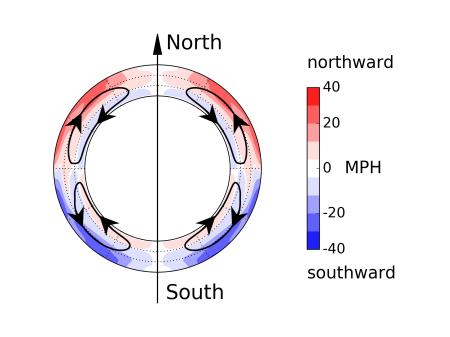In a newly-published study, researchers from the Center for Space Science at NYU Abu Dhabi (NYUAD) and colleagues used helioseismology and analyzed several data sources to find that the Sun’s meridional flow is a single cell in each hemisphere that carries plasma toward the Sun’s equator 200 thousand km below the surface. The meridional flow carries the solar plasma from the Sun’s equator to its poles at the surface and back again towards the equator at the bottom of the convection zone, a process that determines the characteristics of the sunspot cycle.
The researchers’ findings support the flux-transport dynamo model, which relies on the meridional flow to explain the 11-year duration of the sunspot cycle and the latitudinal drift of the location where sunspots emerge. Lead author Laurent Gizon and co-author Chris Hanson of the Center for Space Science at NYUAD report in the paper Meridional flow in the Sun’s convection zone is a single cell in each hemisphere published in Science Magazine how they utilized helioseismology to infer the meridional flow (in the latitudinal and radial directions) over two solar cycles covering twenty-three years.
Two data sources agree during their overlap period of 2001–2011 that the meridional flow is a single cell in each hemisphere, carrying the plasma toward the equator at the base of the convection zone at a speed of less than 10 MPH.
The Sun’s magnetic field is generated by motions of the convecting plasma below our star’s surface. The latitude at which the magnetic field emerges through the solar surface (as sunspots) drifts toward the equator over the course of the 11-year solar cycle. During the solar cycle, the Sun’s magnetic field builds-up in the solar interior, rises up, and leads to the formation of sunspots where it pierces the solar surface.
“We set out to reinforce our understanding of how sunspots, which are magnetized regions on the Sun, are formed during a solar cycle,” said Gizon. “Our analysis supports the flux-transport dynamo model to explain the period of the sunspot cycle and the latitudes at which sunspots emerge.”



